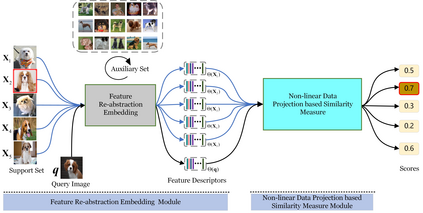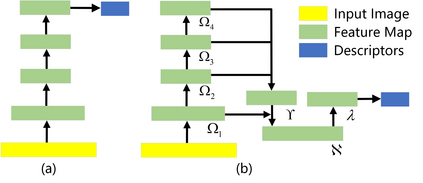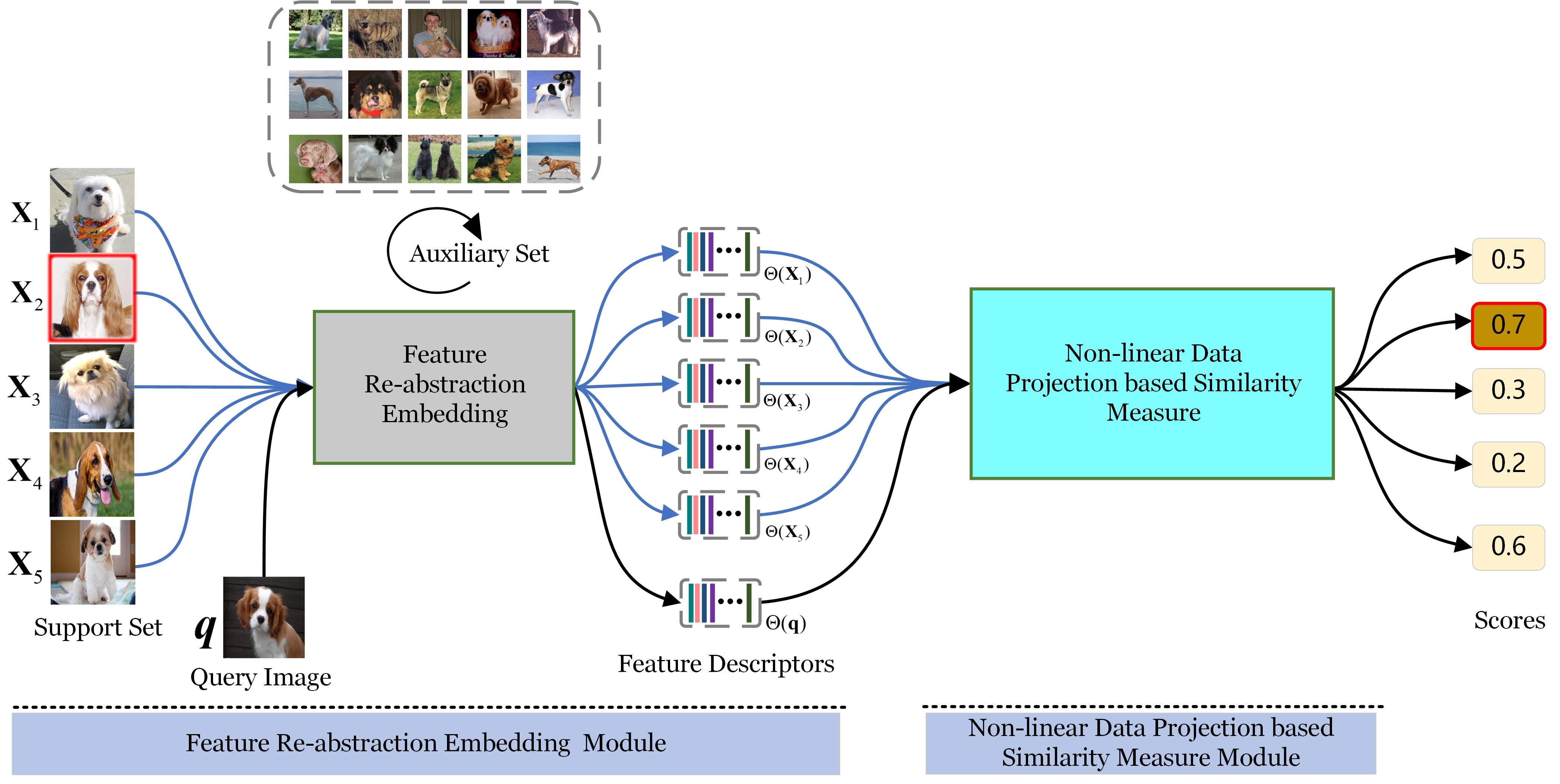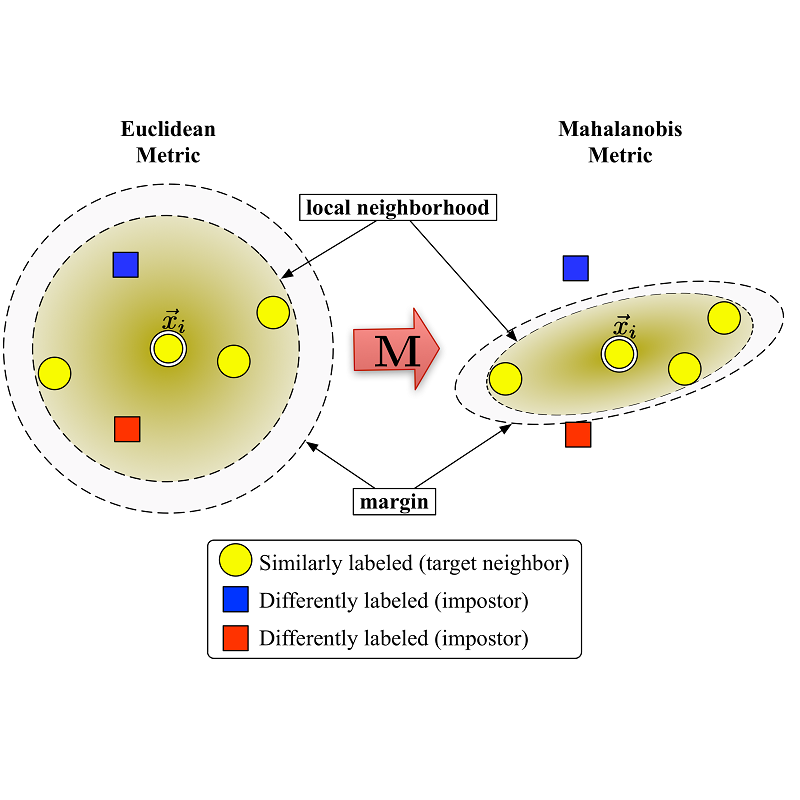Metric-based few-shot fine-grained image classification (FSFGIC) aims to learn a transferable feature embedding network by estimating the similarities between query images and support classes from very few examples. In this work, we propose, for the first time, to introduce the non-linear data projection concept into the design of FSFGIC architecture in order to address the limited sample problem in few-shot learning and at the same time to increase the discriminability of the model for fine-grained image classification. Specifically, we first design a feature re-abstraction embedding network that has the ability to not only obtain the required semantic features for effective metric learning but also re-enhance such features with finer details from input images. Then the descriptors of the query images and the support classes are projected into different non-linear spaces in our proposed similarity metric learning network to learn discriminative projection factors. This design can effectively operate in the challenging and restricted condition of a FSFGIC task for making the distance between the samples within the same class smaller and the distance between samples from different classes larger and for reducing the coupling relationship between samples from different categories. Furthermore, a novel similarity measure based on the proposed non-linear data project is presented for evaluating the relationships of feature information between a query image and a support set. It is worth to note that our proposed architecture can be easily embedded into any episodic training mechanisms for end-to-end training from scratch. Extensive experiments on FSFGIC tasks demonstrate the superiority of the proposed methods over the state-of-the-art benchmarks.
翻译:在这项工作中,我们首次提议将非线性数据投影概念引入FSFGIC架构的设计中,以便在少发的学习中解决有限的抽样问题,同时提高微分图像分类模型的可视性。具体地说,我们首先设计一个功能再吸附嵌入网络,不仅能够获得有效计量学习所需的语义特征,而且还能够以输入图像的细细细节重新加强这些特征。然后,将查询图像和支持课程的描述器投放到我们拟议的类似指标学习网络中不同的非线性空间,以学习歧视性预测因素。这种设计可以有效地在FSFGIC的拟议任务中以挑战性和限制性条件运作,使样本在相同等级内进行较小和不同类别样本之间距离的重复性测试方法,从较大类别获得所需的语义性语言学习,以及用输入图像图像的精细细节来重新加强这些特征。 用于评估我们拟议中的“FSFIIGIC”结构图样图样图样图的缩略图和缩略图图图图图图的缩图解图解图解图解图解图解图谱之间的缩缩缩缩缩缩缩图。










